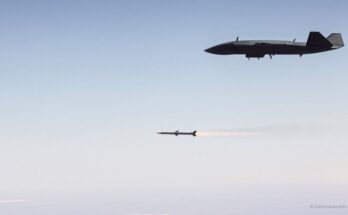by Shaun McDougall, Military Markets Analyst, Forecast International.

U.S. Defense Secretary Ash Carter offered a preview of the Pentagon’s FY17 budget request on February 2, but offered relatively few concrete details. The request will total $582.7 billion, which includes the base budget and funding for Overseas Contingency Operations. The only individual appropriation title that was mentioned was Research, Development, Test and Evaluation, which will receive $71.4 billion, up from $69.8 billion in FY16.
The Pentagon will ask for $7.5 billion for operations against the Islamic State of Iraq and Syria (ISIS), representing an increase of 50 percent over the FY16 earmark. The request will also include $1.8 billion to buy over 45,000 munitions to replenish dwindling stocks. Highlighting concerns about Russia, the European Reassurance Initiative will receive $3.4 billion in FY17, a significant increase over the $789 million provided in FY16. This funding will help pay for more rotational U.S. forces in Europe, more military training and exercises with allied nations, and more prepositioned equipment, among other items.
The FY17 request will maintain more fourth-generation fighter and attack aircraft than previously planned. Retirement of the A-10 has been deferred to 2022, and Carter said the fleet will be retired on a squadron-by-squadron basis as additional F-35s enter service.
The budget plan invests $8.1 billion in undersea capabilities in FY17, and more than $40 billion over the next five years. The Navy will buy nine Virginia class submarines over that timeframe. The current build schedule calls for two subs per year between FY17 and FY20, and one sub in FY21. The FY17 budget will also seek to equip more submarines with the Virginia Payload Module, which will increase a sub’s cruise missile capacity to 40 from 12. Carter said the budget plan also buys more P-8 maritime patrol aircraft, fighter aircraft, torpedoes, and unmanned undersea vehicles.
Cuts to the Littoral Combat Ship program will help pay for some of these investments. “To put more money in submarines, Navy fighter jets, and a lot of other important areas, one tradeoff we made was to buy only as many Littoral Combat Ships as we really need,” said Carter. In December, Carter issued a memo reducing LCS procurement from 52 ships to 40. The move is part of a broader effort to develop a fleet with greater lethality and capability to deter and defeat high-end threats.
Carter highlighted a number of weapons development efforts, including small modular payload guidance kits, swarming autonomous vehicles, gun-based missile defense using hypervelocity projectiles, and something Carter referred to as the “arsenal plane,” which will turn one of the country’s “oldest aircraft platforms” into a launch pad for various conventional payloads. The Pentagon could potentially utilize B-52s or older C-130s for this purpose.
The FY17 budget plan invests an average of $7 billion per year on cyber capabilities over the next five years. The Pentagon is also continuing procurement reform efforts, and hopes to save nearly $8 billion over five years by reducing overhead.
The FY17 budget request will be released on February 9.
For 50 years, Forecast International intelligence reports have been the aerospace and defense industry standard for accurate research, analysis, and projections. Our experienced analysts compile, evaluate, and present accurate data for decision makers. FI's market research reports offer concise analysis of individual programs and identify market opportunities. Each report includes a program overview, detailed statistics, recent developments and a competitive analysis, culminating in production forecasts spanning 10 or 15 years. Let our market intelligence reports be a key part of reducing uncertainties and mastering your specific market and its growth potential. Find out more at www.forecastinternational.com



